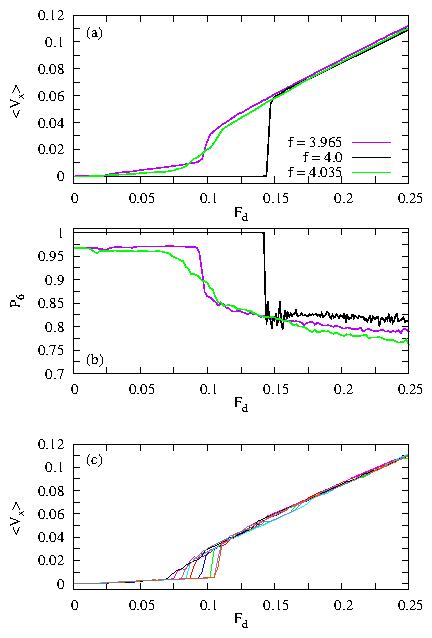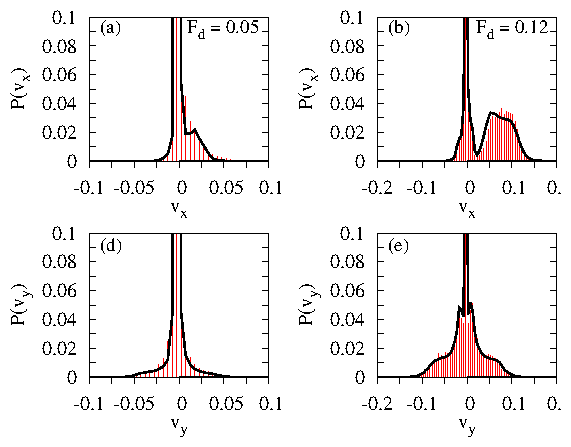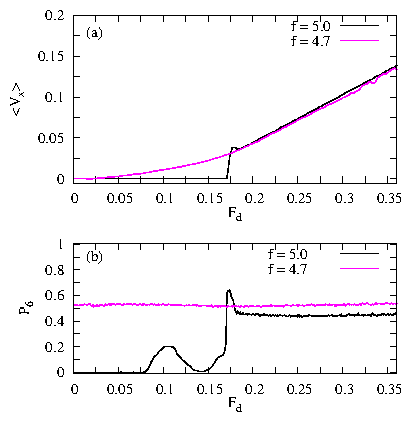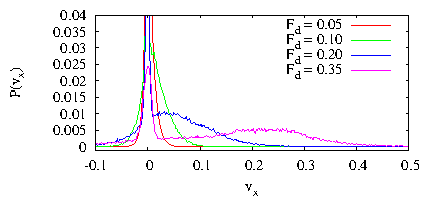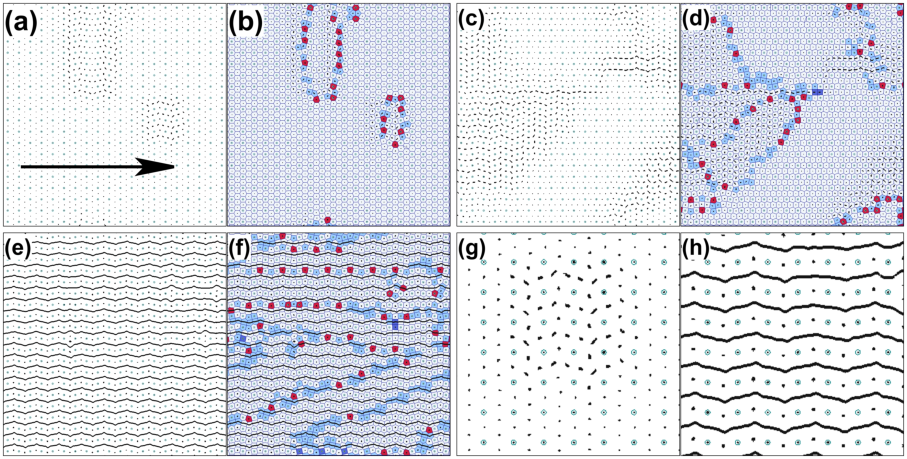 Figure 2: (Color online) (a,c,e)
The pinning site locations (open circles) and particle trajectories
(black lines) over a fixed interval of time for the
system at f = 4.035.
(a) Fd = 0.05, (c) Fd = 0.08, and (e) Fd = 0.2.
(b,d,f) Pinning site locations (open circles), particle trajectories (black
lines), and Voronoi construction (blue lines)
for the same sample at
(b) Fd = 0.05, (d) Fd = 0.08, and (f) Fd = 0.2.
The Voronoi polygons are colored according to their number of sides:
4 (dark blue), 5 (light blue), 6 (white), and 7 (red).
(a,b) The moving grain boundary state; (c,d) the fluctuating grain boundary
state; and (e,f) the continuous flow regime.
(g) A blowup of the particle positions and trajectories from (a) showing more
clearly the the localized motion near a grain boundary. (h) The same
for the system in (e), showing more clearly that there are two types of
pinned particles: those trapped at the pinning sites, and those trapped
in the interstitial regions.
Figure 2: (Color online) (a,c,e)
The pinning site locations (open circles) and particle trajectories
(black lines) over a fixed interval of time for the
system at f = 4.035.
(a) Fd = 0.05, (c) Fd = 0.08, and (e) Fd = 0.2.
(b,d,f) Pinning site locations (open circles), particle trajectories (black
lines), and Voronoi construction (blue lines)
for the same sample at
(b) Fd = 0.05, (d) Fd = 0.08, and (f) Fd = 0.2.
The Voronoi polygons are colored according to their number of sides:
4 (dark blue), 5 (light blue), 6 (white), and 7 (red).
(a,b) The moving grain boundary state; (c,d) the fluctuating grain boundary
state; and (e,f) the continuous flow regime.
(g) A blowup of the particle positions and trajectories from (a) showing more
clearly the the localized motion near a grain boundary. (h) The same
for the system in (e), showing more clearly that there are two types of
pinned particles: those trapped at the pinning sites, and those trapped
in the interstitial regions.
|
